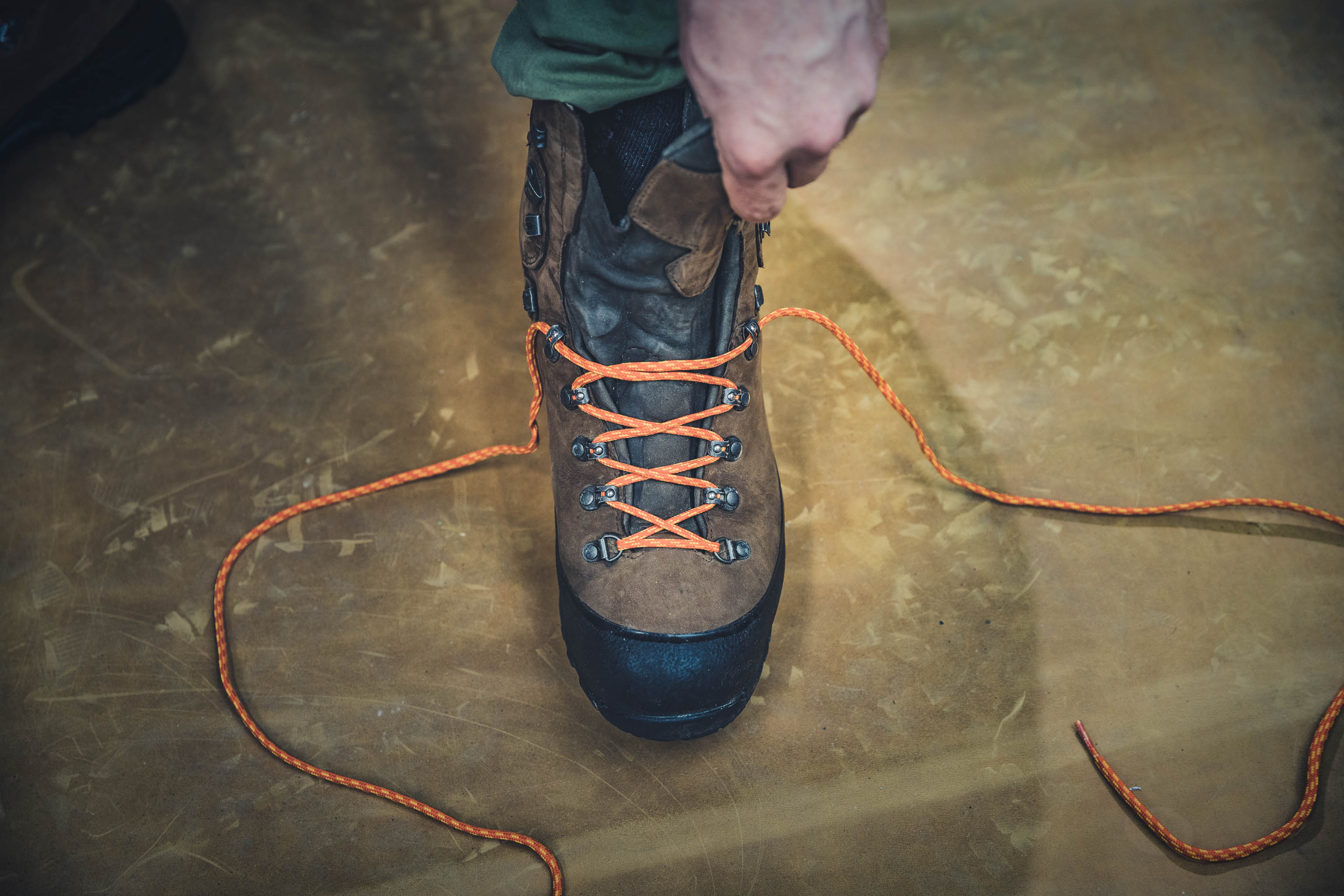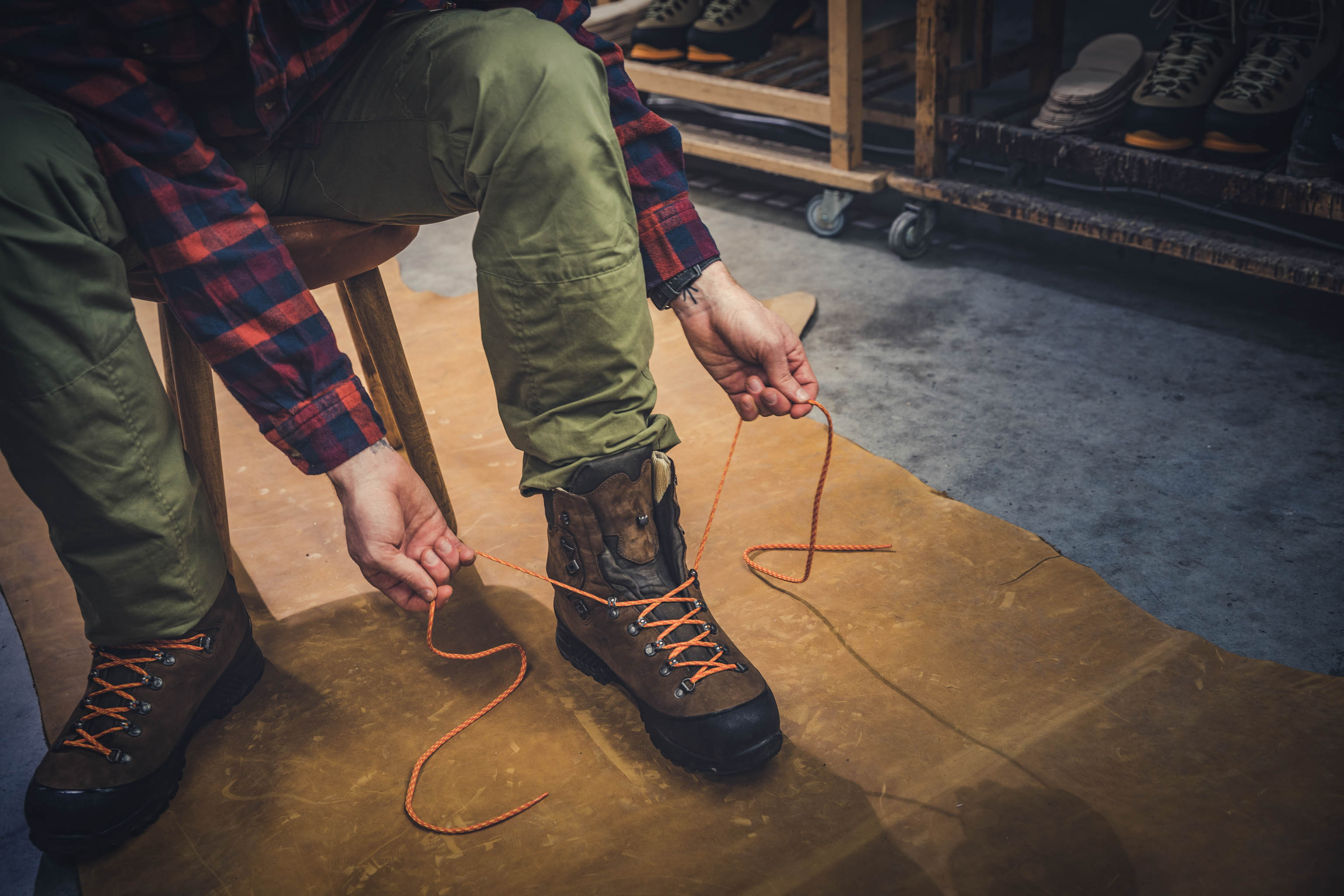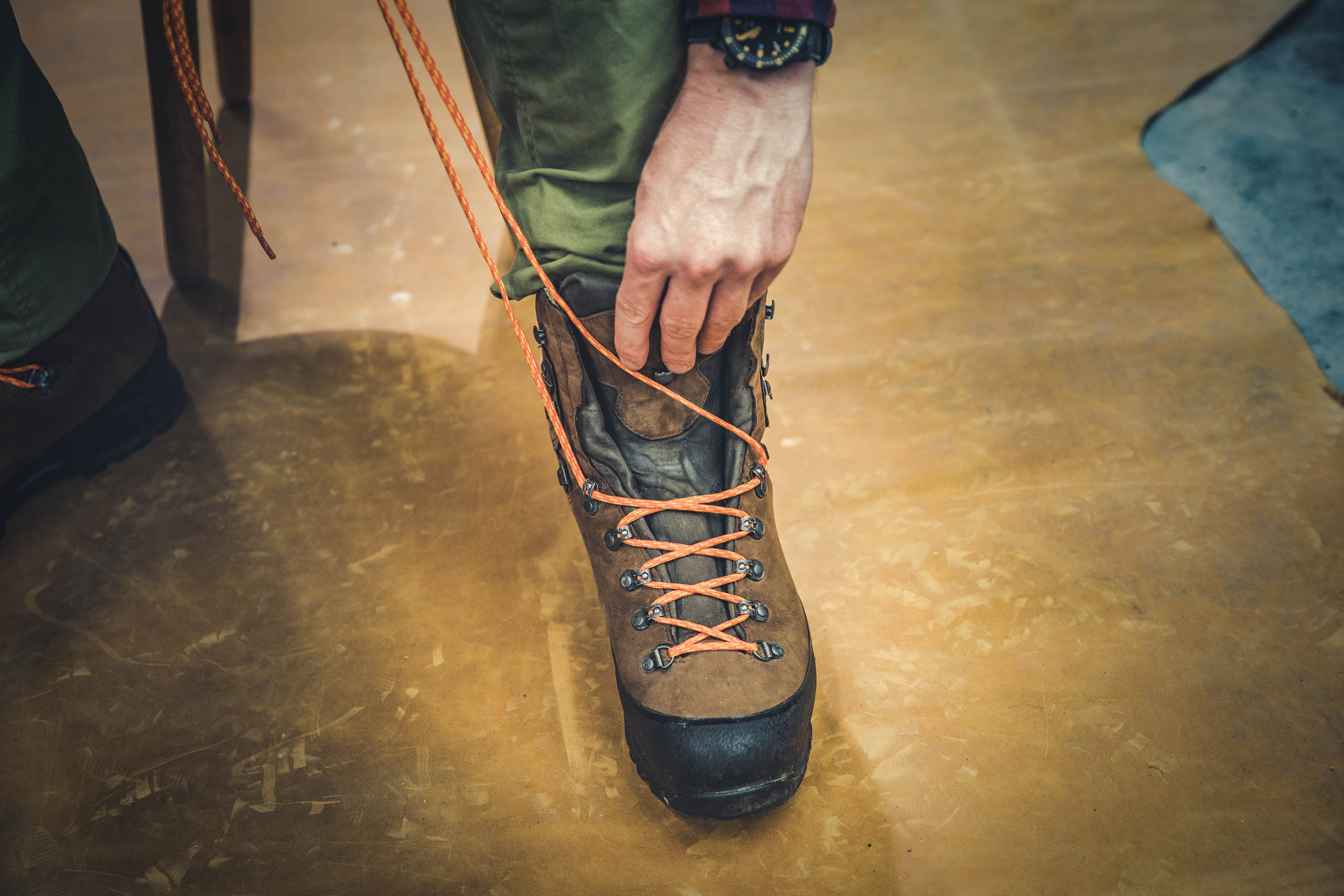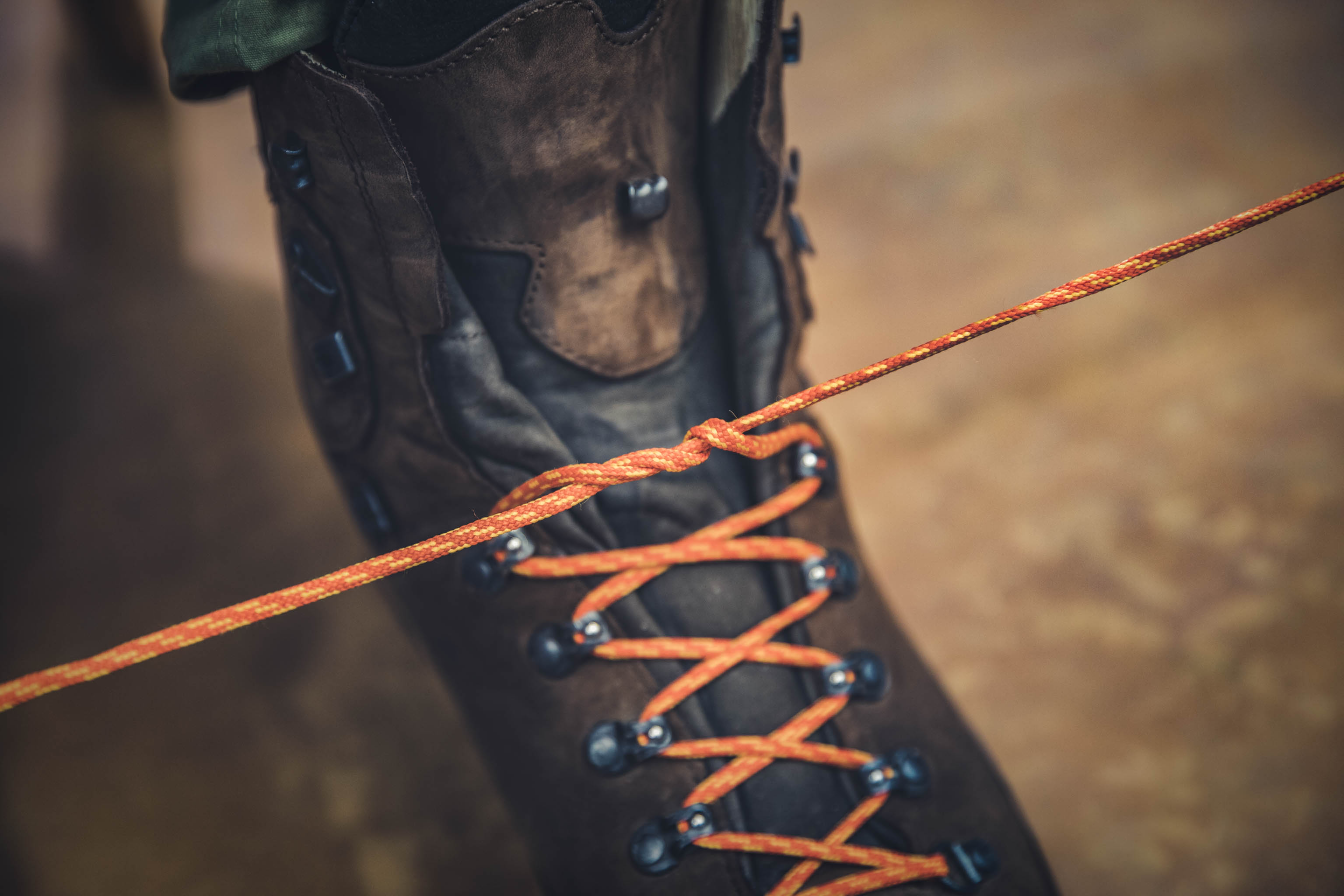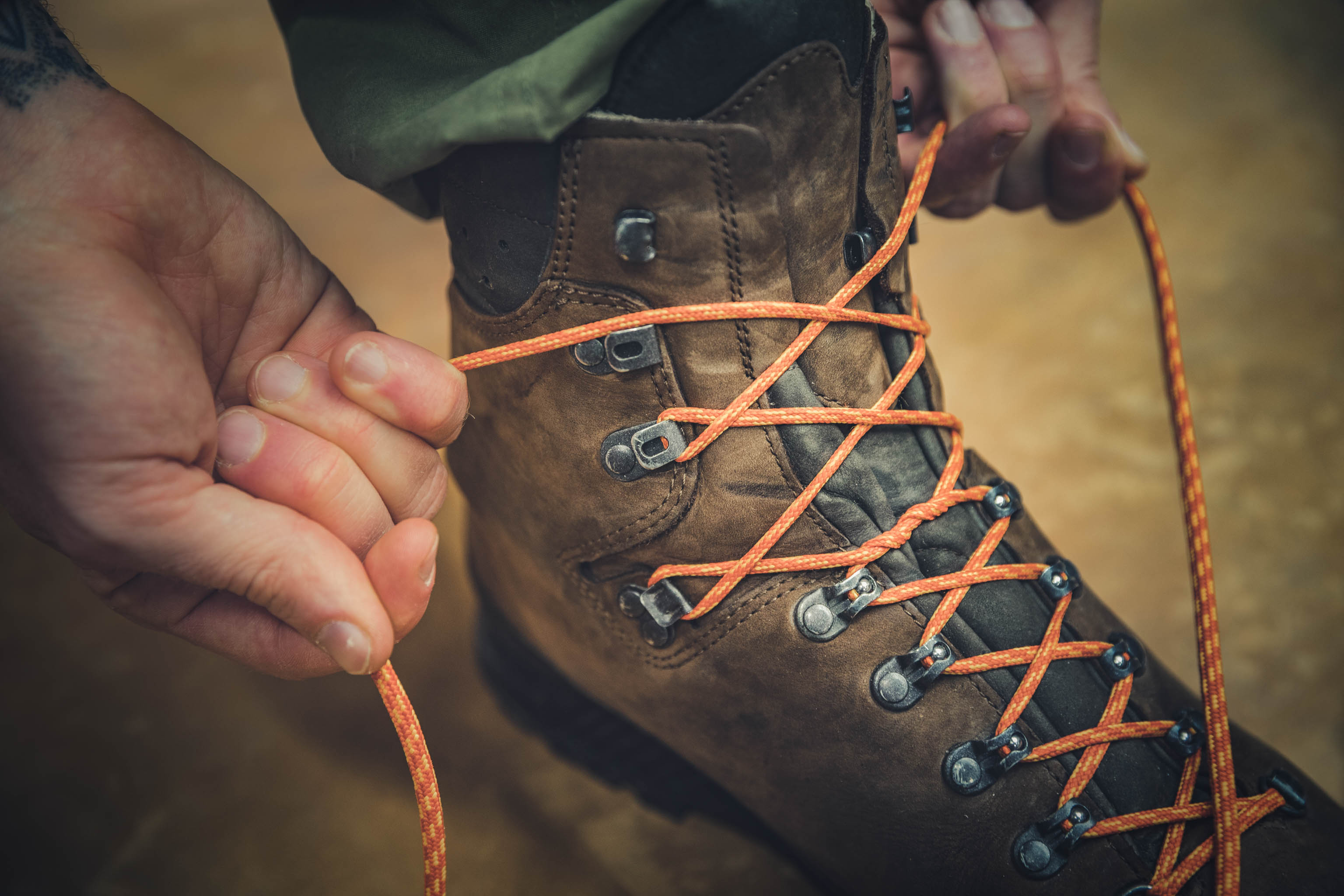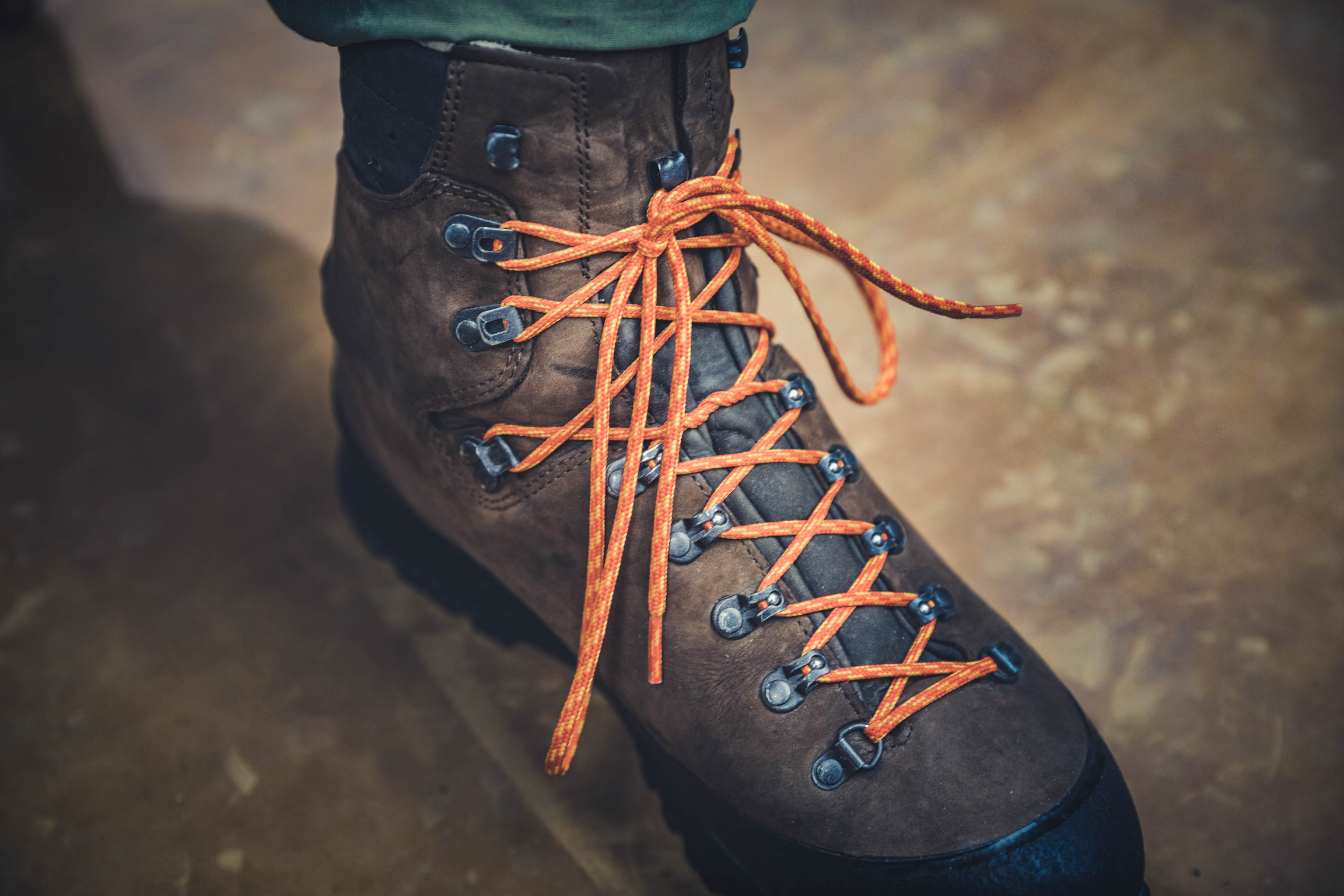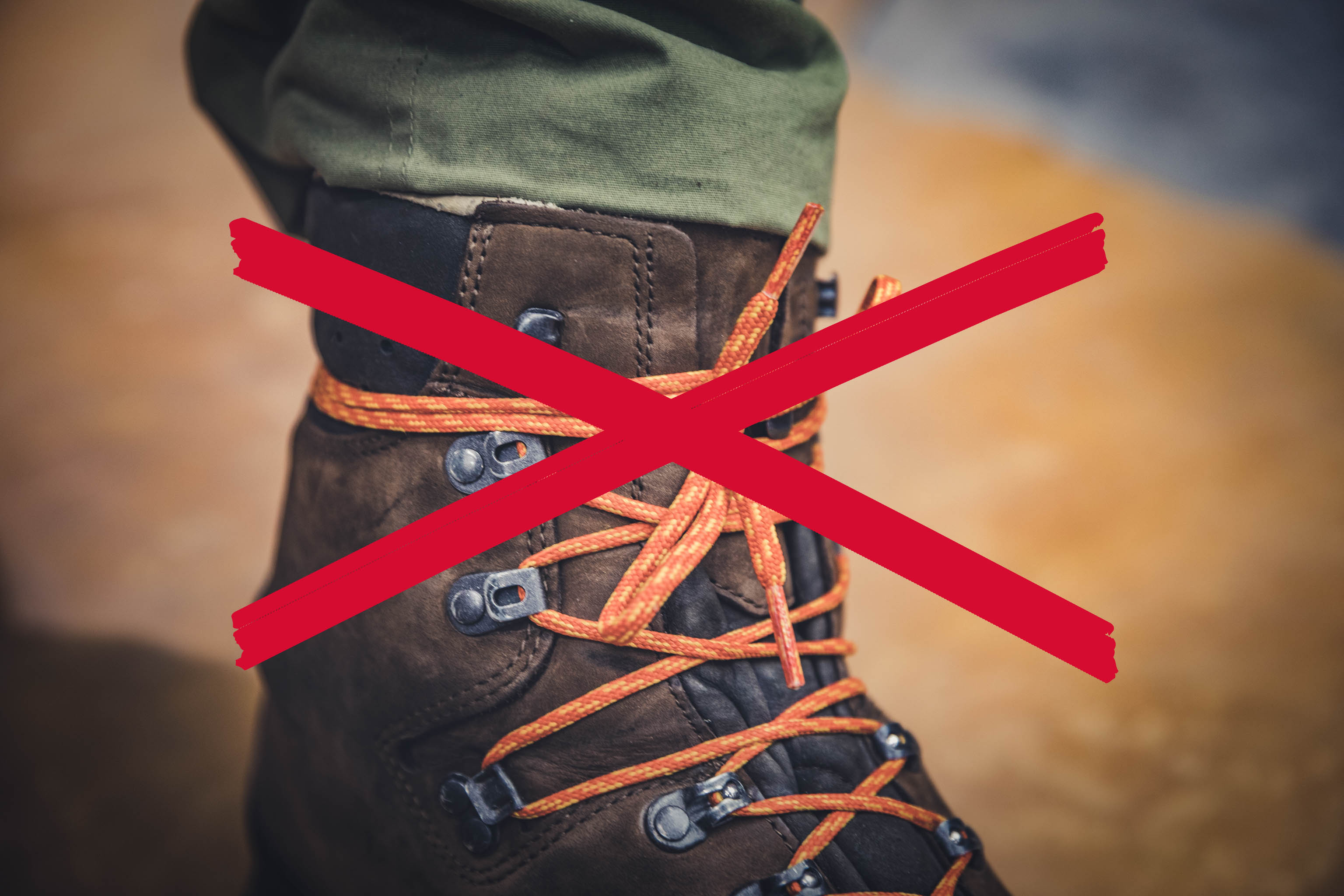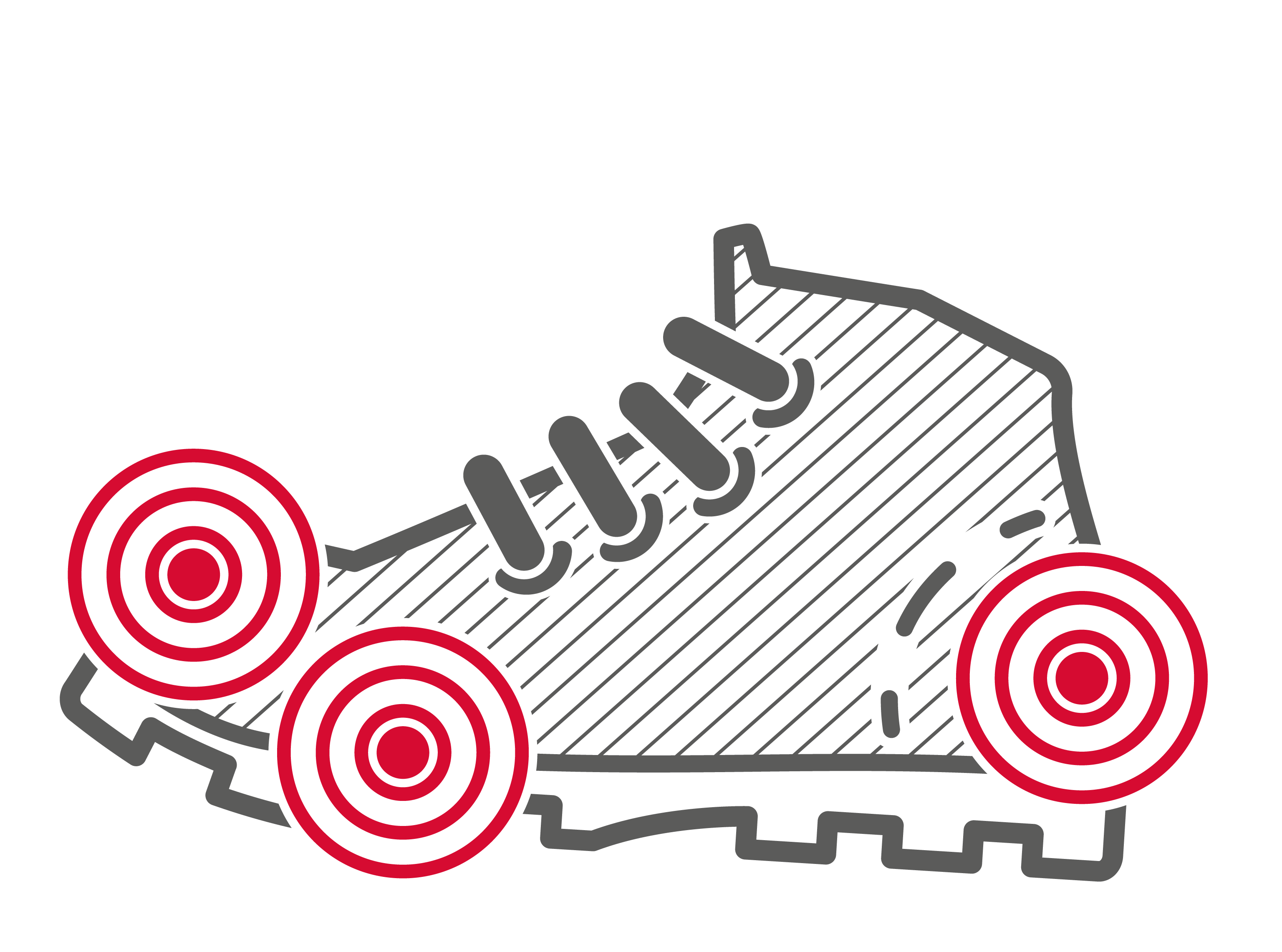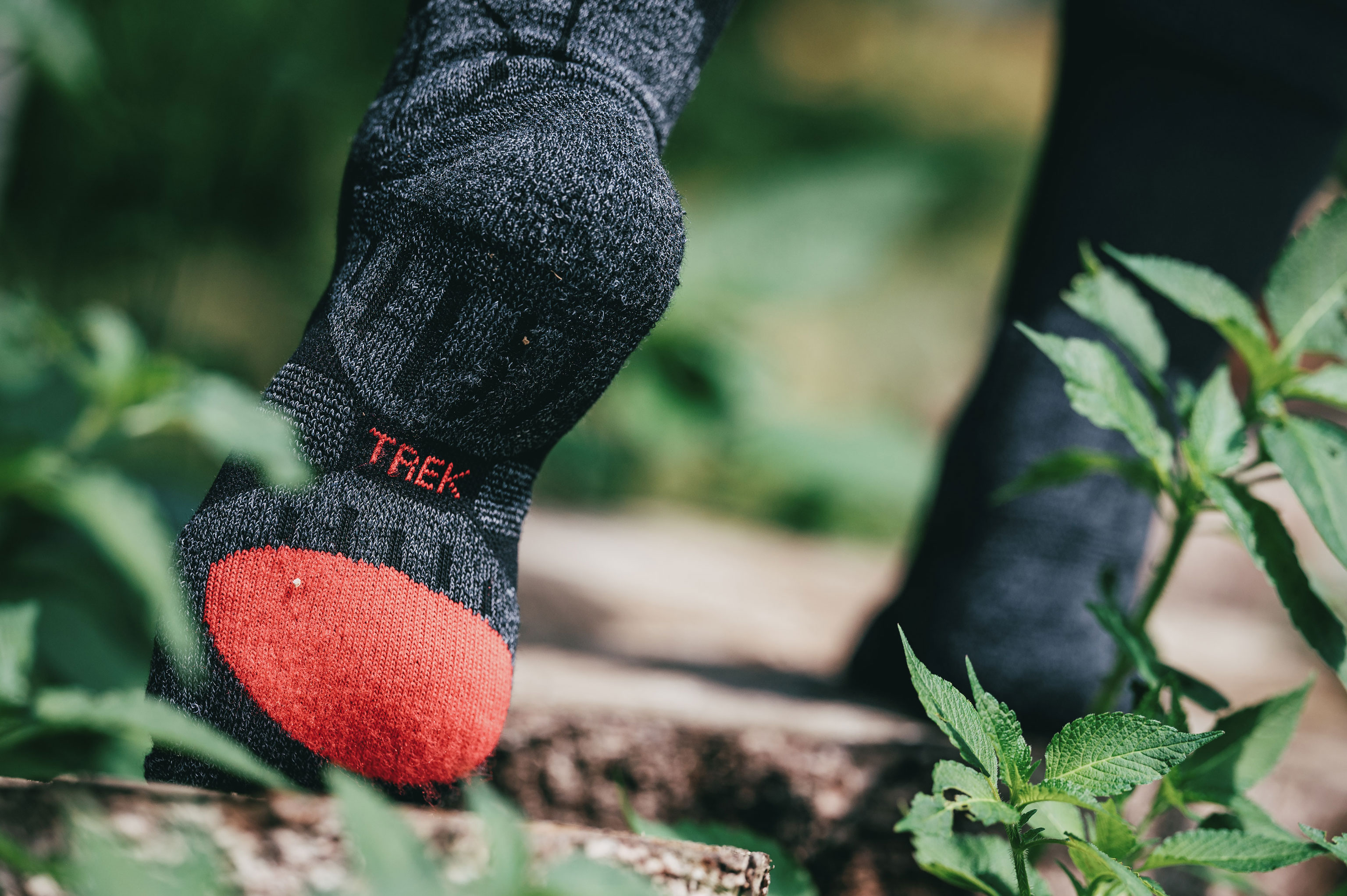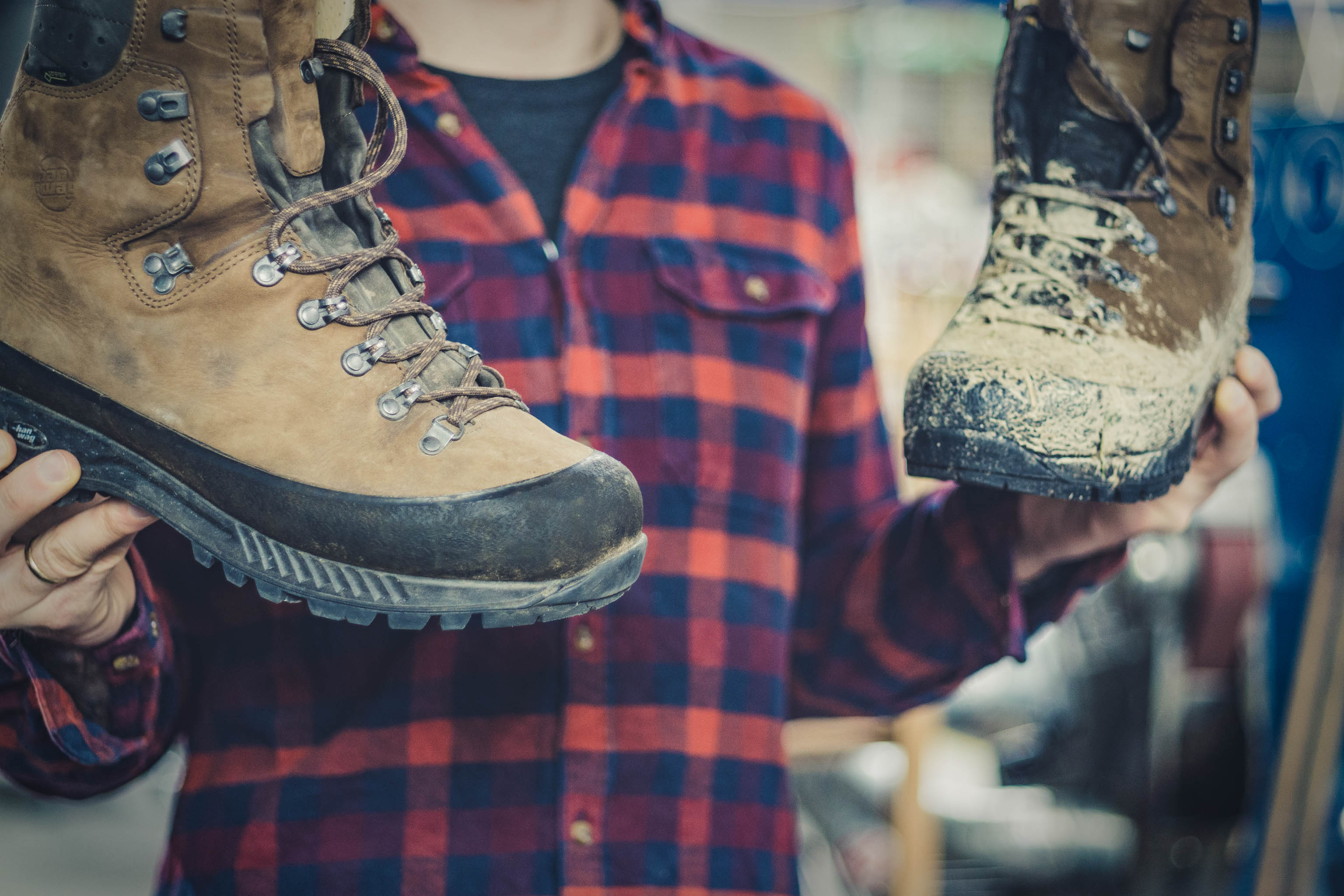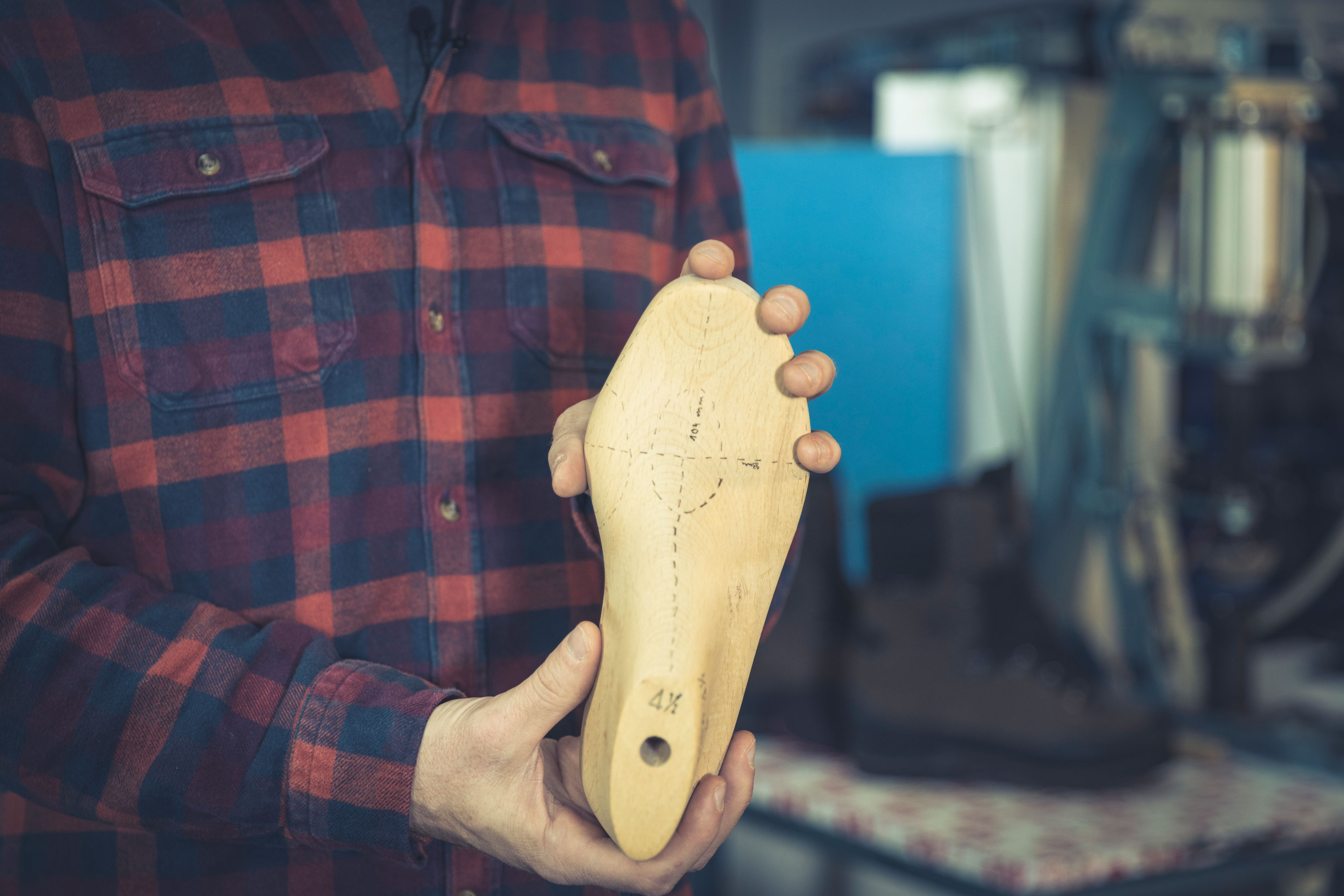Updated on
-
Sneak Peak – The 5 Key Tips
- Hiking boots and mountain boots with high uppers often have several different lacing zones. You can use them to set different lacing tensions at the different areas: forefoot, midfoot and ankle.
- Zoned lacing also makes it possible to adapt the fit for different foot shapes.
- Parallel lacing is a particularly useful technique. It relieves pressure at the instep.
- Lock lacing improves the fit at the heel.
- The best position to tie your shoelaces: sit on a chair with your foot on the floor slightly in front of you.
For more in-depth information, read the whole article.
- How the lacing works
- How to tie walking boots in 7 steps
- Lacing up boots according to your foot shape
- Adjusting the lacing on the go
- How to lace for uphill and downhill
- The right laces
You just lace ‘em up and off you go… Surely, we learnt all we need to know about tying laces when we were kids. However, hiking boots and mountain boots are a bit different, and often have complex lacing systems. This makes it possible to adapt the fit to the shape of your foot, to prevent rubbing or for different types of terrain.
See our expert advice on how to tie walking boots properly. Don’t worry – it’s not difficult. The following tips and tricks can make a big difference when you lace up hiking boots.
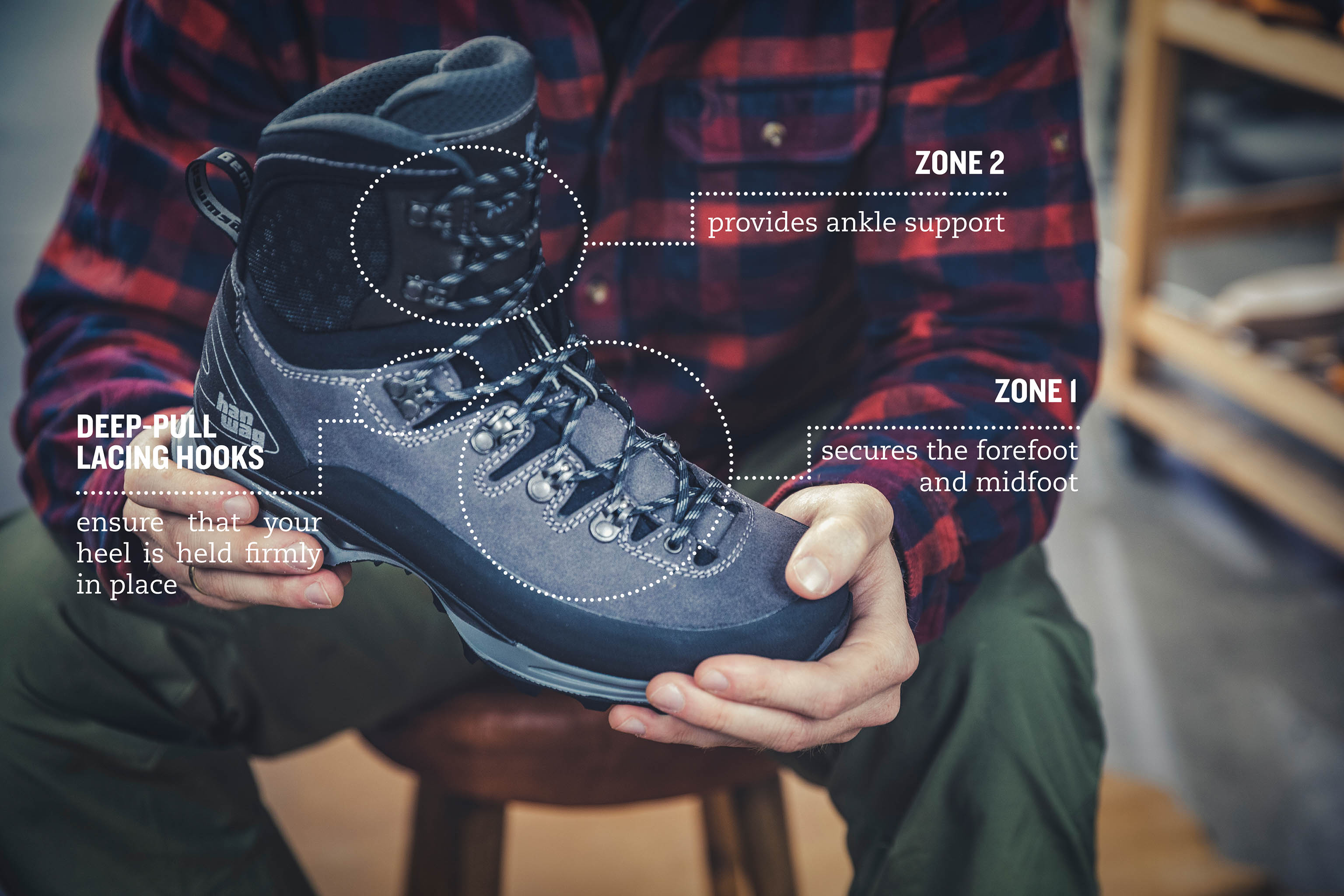
1 How the lacing works
Of course, your walking boots or mountain boots should fit well without using any lacing tricks. When it comes to fit, the size and also the width are decisive.
Once you have purchased your boots, you can use the lacing system to adjust the fit or to adapt to different situations. Most hiking boots and mountain boots fit over the ankle and are equipped with two-zone lacing. You use them to set different lacing tensions at different sections of the foot.
- Zone 1: Sets the tension at the forefoot and midfoot. The lacing is usually threaded through eyelets over the instep.
- Zone 2: There are no eyelets on the upper, instead we use lace hooks and clamping lace hooks. This zone secures the ankle in the boot, and also ensures that the heel is firmly locked in place. The so-called deep-pull lacing hooks are important here. They prevent heel slip – one of the main causes of blisters.

"You can lace full mountain boots tighter than lightweight hiking boots."
Andreas Settele, Head of Research and Development HANWAG2 How to tie walking boots in 7 steps
Before you set out on a tour, you tie your boots and check your laces – obviously. The following gallery shows how to do it:
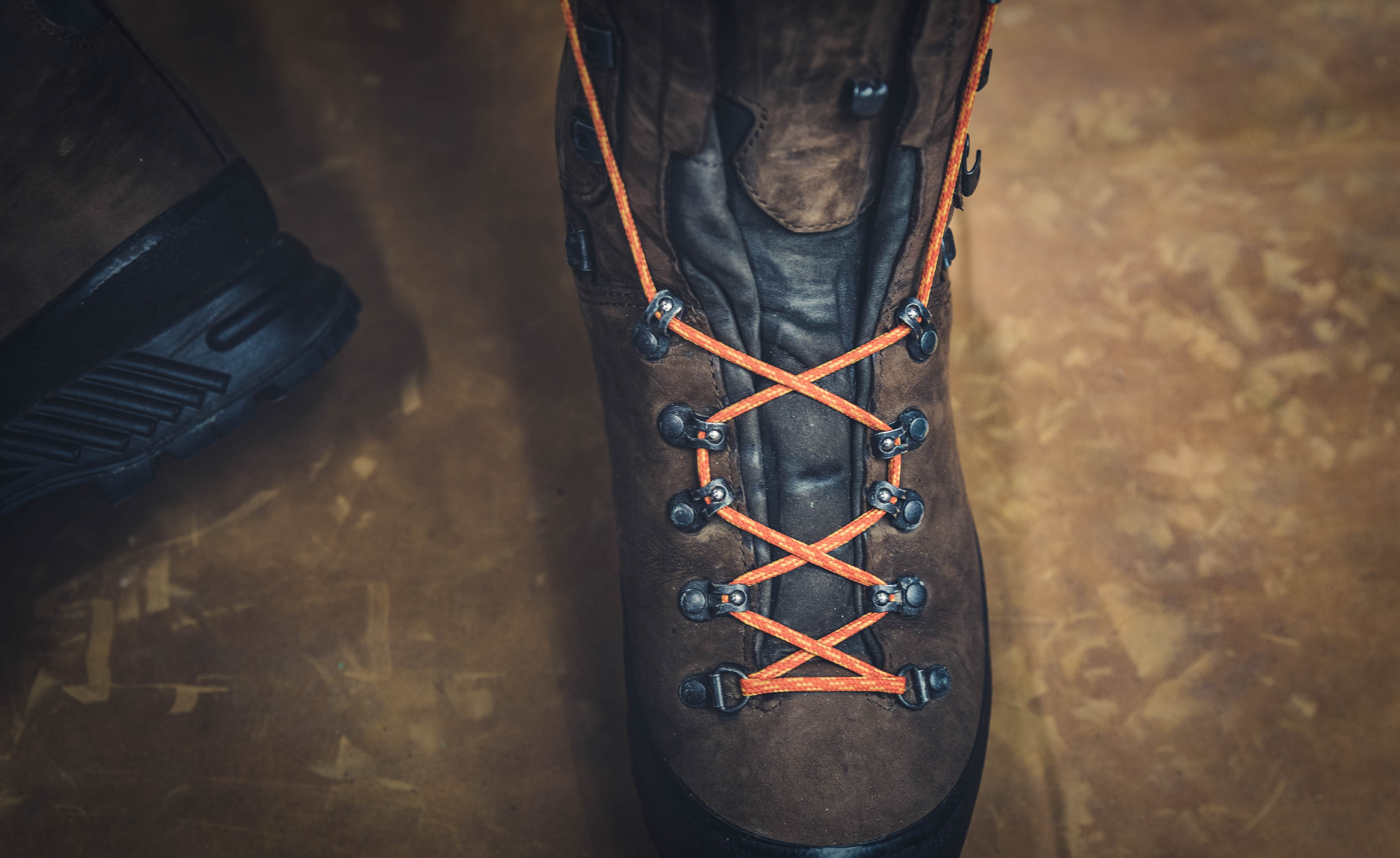
3 Lacing up boots according to your foot shape
No two feet are the same. However, using the right lacing and lacing tricks can help make your boots fit your feet better. Here are the top tricks:
- Some people have an uneven instep, or ganglions on the top of their feet. If your boot rubs at these areas, then parallel lacing (aka ‘window lacing’ or ‘box lacing’) can help. Lace your boots by going straight from one eyelet to the next on the same side instead of crossing the laces over. This then leaves more room and relieves pressure across the top of the foot.
- High-quality hiking boots have an anatomically shaped heel cap. However, sometimes your heel can lift slightly in an upward direction during roll-off. This so-called heel slip is the main cause of blisters. If you notice that your heel slips when you are hiking, you can improve the fit of your boots using lock lacing. The heel lock technique acts like a pulley system to pull the lacing tighter – exactly at the point where you want to lock your heel in more firmly.
As lock lacing is a bit more complicated, we’ll show you here in the video:
Watch the video to see the most important lacing techniques for hiking boots (English subtitles available)

Expertise and know-how for your outdoor adventures – welcome to the HANWAG BOOTCAMP. Watch the how-to videos on our YouTube channel.
4 Adjusting the lacing on the go
You’ll be familiar with the situation: you tied your bootlaces securely before you set out, but after fifteen minutes they start to feel loose. “This is perfectly normal,” explains Andreas Settele. The force every time you step causes the lacing and the padding inside your boot to give slightly. The solution: simply stop for a minute and tighten your laces.
In addition, the shape of your feet alter during the course of a day’s hiking. Generally, they swell slightly. This can cause pressure points. The solution: Loosen your laces from time to time, to relieve the pressure.

"Traversing rough terrain and descending steep trails requires stability and support. Adjust your lacing before tackling more difficult sections."
Andreas Settele, Head of Research & Development HANWAGWant to know how to lace up hiking boots to prevent heel blisters? The solution is a simple one, tighten the laces at the area in question, to prevent your foot rubbing against the inner lining.
“Adjusting the lacing is the quickest and easiest way to customise the way your boots fit”, says Andreas Settele. You can even adapt to different terrain by altering the fit in the middle of a hike.
5 How to lace for uphill and downhill
The lacing system on hiking boots allows you to set different lace tensions at the two different zones. This allows you to adapt your boot according to the terrain. Here’s how you do it:
- For ascents: in zone 1 the lacing should be medium to tight, make sure the heel sits firmly; in zone 2 the upper lacing should be looser for better freedom of movement when moving uphill.
- For downhill: zone 1 keep the lacing tight; keep the lacing in zone 2 tight too – for better grip and stability on descents.
6 The right laces
It’s not just how you lace your boots that determine fit and comfort, but also the type of laces you use. Depending on the boot type, laces will have different lengths and different shapes (round or flat). They also have different stretch properties. It’s best to use the original laces supplied with your boots, as they are designed to match the boot construction, the hooks and eyelets and the area of use.
It’s a good idea to waterproof your bootlaces when you clean your boots. If they are really dirty, wash your laces in warm water. This will also help them last longer, as dirt and sand can get inside the laces and cause the material to wear out faster.
Conclusion: It’s worth experimenting with different ways of lacing up boots to see what works for you
It’s just such an easy way to improve the hiking comfort of your walking boots. And if your boots become uncomfortable, adapting the lacing can make all the difference – and save you having to invest in a new pair too.

